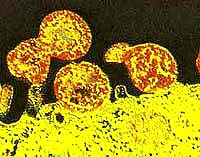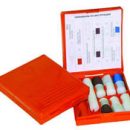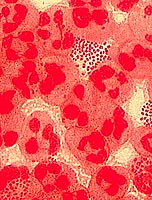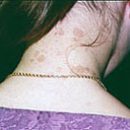If a person infected with ureaplasmosis does not begin to be treated, then in a few days illness «passes» herself that serves as a reason to calm down. But, unfortunately, this ureaplasmosis does not end...
Content
 Ureaplasmosis (mycoplasmosis) refers to a group of sexually transmitted diseases. His pathogens are bacteria belonging to the genus. One species of these bacteria received the name of ureaplasm for a characteristic feature - the ability to split urea.
Ureaplasmosis (mycoplasmosis) refers to a group of sexually transmitted diseases. His pathogens are bacteria belonging to the genus. One species of these bacteria received the name of ureaplasm for a characteristic feature - the ability to split urea.
How Ureaplasmosis is infected?
Infection is possible with unprotected sex contact - both classically and oral. Other ways of transmission of infection (in everyday life, swimming pool, in the sauna, bath) are impossible. The only incomplete path of transmission of infection - from the mother to the fetus of intrauterine or in the process of childbirth, when passing a child through labor pathways.
The incubation period of ureaplasmosis (mycoplasmosis) from the moment of infection before the appearance of clinical manifestations is from 5 to 35 days. During this time, a person is a carrier of infection and can be a source of infection for its sexual partners.
After the incubation period, the patient develops the symptoms of urethritis - burning and pain in the urethra in urination, mucous discharges, often appearing in the morning. If the infection occurred with oral sex, angina develops with all the symptoms ordinary for it.
In the overwhelming majority of cases, especially in women, ureaplasmosis flows a small-axipput, and all the manifestations of the disease are expressed so insignificant that it is often a sick person at all gives them values. However, the manifested symptoms of the disease do not at all reflect all its seriousness.
If not to be treated, after a while, all the symptoms pass, but at the same time infection reliably settles in the wall of the urethra, in the prostate gland in men, in the vagina and the uterus in women. Starting from now on, the disease will only wait for its o'clock, that is, the reduction of immunity to express oneself in full force. The reason for this can be overcooling, significant physical exertion, prolonged stress, any cold or inflammatory disease, and T.NS.
In men, ureaplasma (mycoplasma) are causative agents of urethritis and prostatitis. For women, the defeat of all genital organs is characteristic - vagina (vaginitis), cervical cervix (cervicitis), bodies of the uterus (endometritis), uterine pipes and ovaries (salpingo-phorite). In turn, these diseases may cause spontaneous miscarriage, premature births, postpartum endometritis, as well as lead to the development of infertility, both female and male.
To diagnose ureaplasmosis (mycoplasmosis), women are taken by a scraping from the mucous meter of the urethra and the cervical canal, in men - scraping from the urethra, the secret of the prostate gland, and in some cases and sperm. If necessary, the smear is taken from the throat.
For diagnostics use a number of studies. Some of them are directed to the detection of DNA fragments (PCR method), others determine the cell wall antigens of the microbe (Raga, ELISA, Reef). The most reliable for diagnosis is the culture method of the study, when the material assembled in the patient, the material collected in the patient is seized, while the growth of ureaplasma (mycoplasma) is reliably detected, the titer is determined, that is, in what quantity the pathogen in the host body is determined, the sensitivity to antibiotics is determined. The latter is very important because there are immunity to a number of antibiotics strains (family) of microorganisms.
Is it possible to cure ureaplasmosis?
Treatment of the disease is always complex and selected for each patient individually, taking into account the overall health and characteristics of a particular body. For treatment, in addition to antibiotics, drugs that stimulate immunity, vitamins, physiotherapy, ozone therapy and other methods are used, depending on the distribution of infection on certain organs.
After the end of therapy after 2 weeks and after a month, control analyzes are taken. Mandatory is the treatment of all patient's sexual partners, since otherwise repeated infection.









